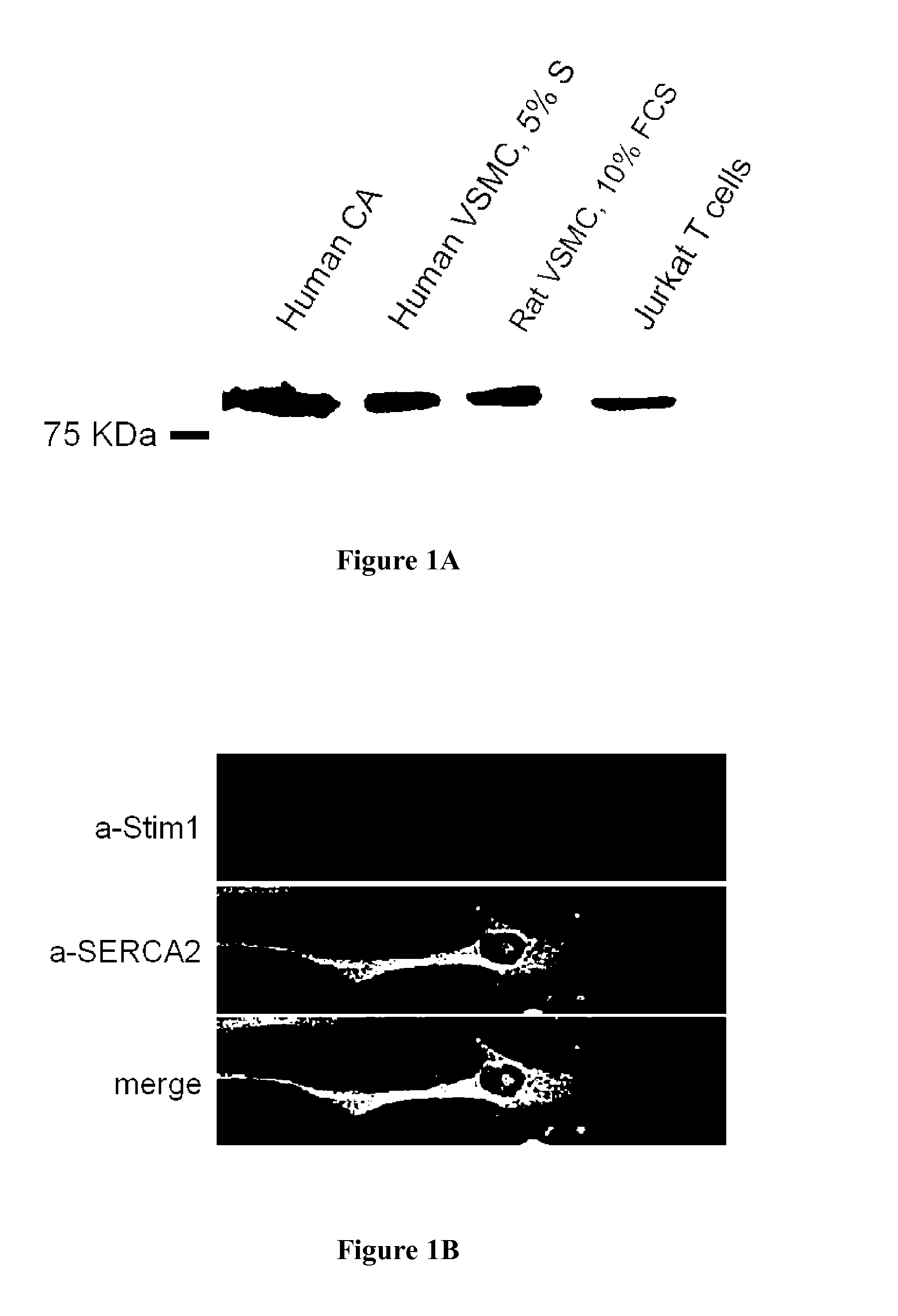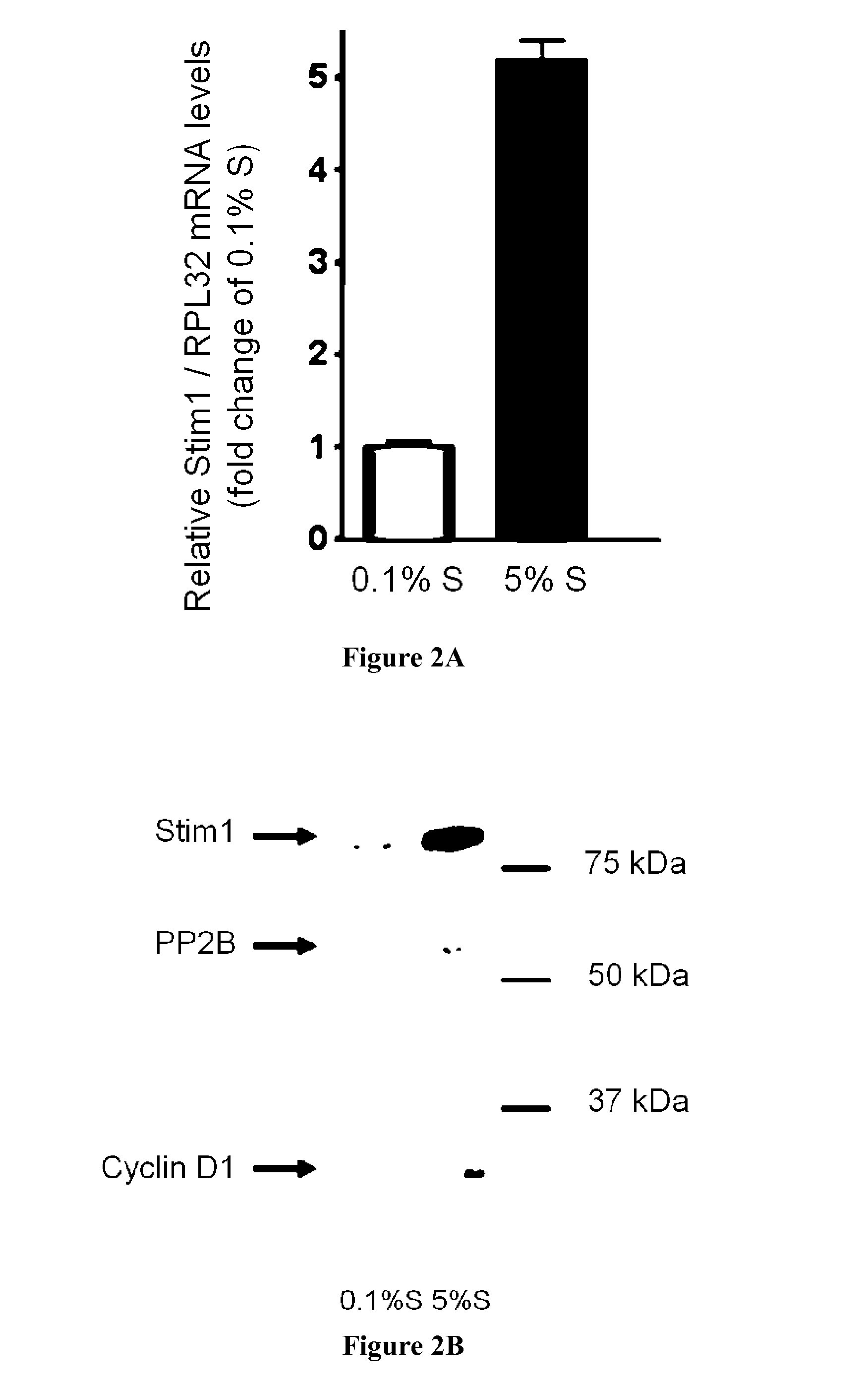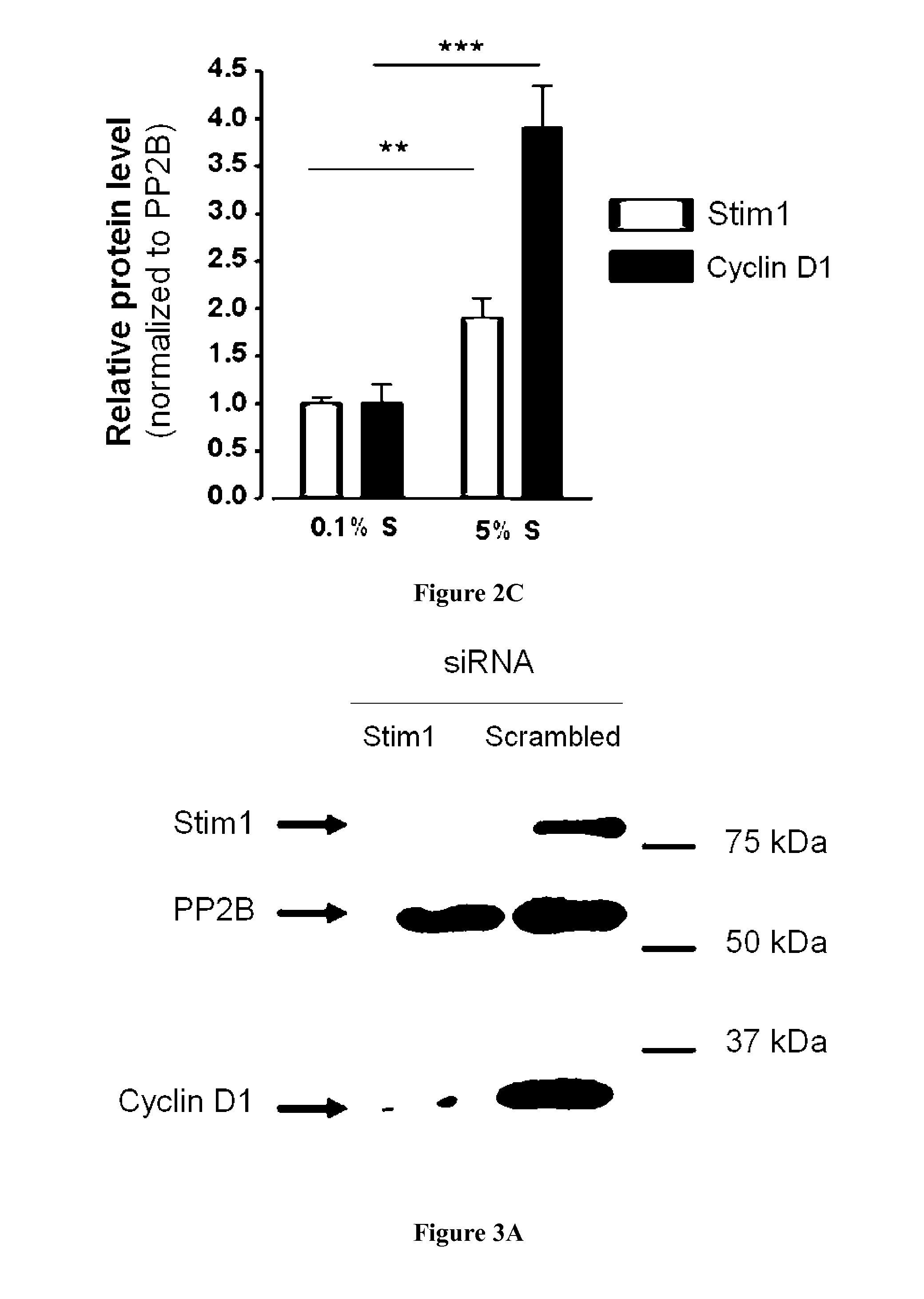Inhibitors of stim1 for the treatment of cardiovascular disorders
- Summary
- Abstract
- Description
- Claims
- Application Information
AI Technical Summary
Benefits of technology
Problems solved by technology
Method used
Image
Examples
example 1
STIM1 and Vascular Smooth Muscle Cell (VSMC) Proliferation
[0077]STIM1 is expressed in vascular smooth muscle cells: Immunofluorescence analysis of balloon-injured rat carotid arteries (a well-characterized model of SMC proliferation) revealed that STIM 1 was expressed in the media as well as in highly proliferative SMC in the neointima. The expected 90 kDa protein (the same molecular weight than the protein observed in human Jurkat T cell) was present in both vascular smooth muscle cells isolated from human coronary artery (hCASMC) and in rat aorta smooth muscle cells (FIG. 1A). Confocal immunofluorescence analysis in isolated vascular smooth muscle cells revealed a predominant endoplasmic reticulum distribution of STIM1, which was similar to the one of SERCA2, an endoplasmic reticulum marker (FIG. 1B).
[0078]STIM1 is upregulated in proliferative VSMC: Relative expression level of STIM1 mRNA was obtained by quantitative Real Time PCR in quiescent (0.1% supplement mix, S, cultured hCA...
example 2
STIM1 and Cardiomyocyte Hypertrophy
[0087]STIM1 mRNA was detected by PCR in the human heart, in both atria and ventricles (FIG. 7A). The protein was also detected in human and rat ventricles (FIG. 7B). STIM1 protein was detected by Western-blot and immunofluorescence in isolated adult or neonatal cardiomyocytes (FIG. 7B). Stim1 expression persist for at least 7 days in culture (FIG. 7B).
[0088]To determine the expression of STIM1 in pathological growth, we used a model of pressure overload induced by abdominal aortic banding (AAB) in the rat. As shown in FIG. 8A the heart weight / to body weight ratio was increased in the AAB without increase in total body weight reflecting pathological cardiac growth. This pathological cardiac growth was confirmed by an increased ANF and MCIP mRNA levels, two markers of cardiac hypertrophy (FIG. 8B). Interestingly, STIM1 mRNA level detected by qRT-PCR was also significantly increased (p=0.08) (FIG. 8B). The expression in STIM1 expression was confirmed ...
PUM
 Login to View More
Login to View More Abstract
Description
Claims
Application Information
 Login to View More
Login to View More - R&D
- Intellectual Property
- Life Sciences
- Materials
- Tech Scout
- Unparalleled Data Quality
- Higher Quality Content
- 60% Fewer Hallucinations
Browse by: Latest US Patents, China's latest patents, Technical Efficacy Thesaurus, Application Domain, Technology Topic, Popular Technical Reports.
© 2025 PatSnap. All rights reserved.Legal|Privacy policy|Modern Slavery Act Transparency Statement|Sitemap|About US| Contact US: help@patsnap.com



